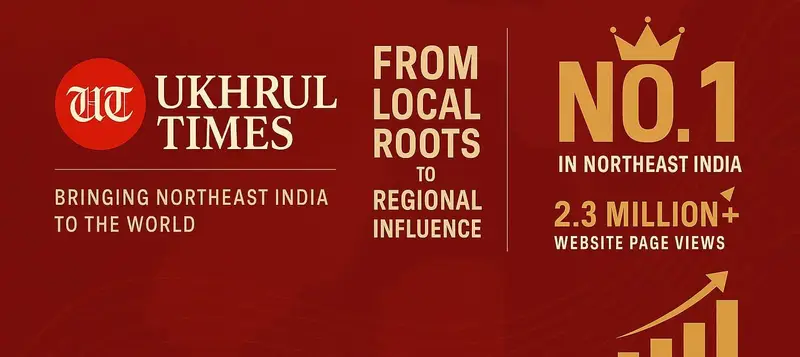Now Reading: PAI Report Says Tripura Villages Are Neither Best Nor Worst
-
01
PAI Report Says Tripura Villages Are Neither Best Nor Worst
PAI Report Says Tripura Villages Are Neither Best Nor Worst

Agartala: What does it mean to live in a ‘healthy’ but water-scarce village? Or in a gram panchayat deemed socially secure, but lacking clean streets and streetlights? The Panchayat Advancement Index (PAI) for Tripura offers data-driven answers to these pressing questions — and reveals a complex, often paradoxical picture of rural life in the state. While some villages have made strides in health and livelihoods, others continue to lag in basic amenities like water supply, infrastructure, and sanitation. The report, compiled through the Ministry of Panchayati Raj’s PAI portal, assessed all 1,176 gram panchayats (GPs) in Tripura across nine thematic areas, ranging from health and governance to environmental sustainability and women’s empowerment.
In a state where data validation has reached 100 percent at every administrative level — block, district, and state — one might expect commendable performances. However, not a single gram panchayat achieved an A+ grade in any of the themes. Overall, 61.9 percent of GPs fell into the ‘B’ grade category, while 34.5 percent were rated ‘C’, and just 3.6 percent managed to attain an ‘A’. Encouragingly, there were no D-grade panchayats, but the complete absence of top-tier performers reveals significant room for improvement in policy implementation and grassroots governance.
Also read | BIMSTEC Nations Inspect Agartala ICP To Strengthen Cross-Border Trade
Among the best performers was Rupaichari GP in South Tripura, which topped the state with a PAI score of 82.08, followed closely by Bampur in Gomati district and West Malbasa. Interestingly, Unakoti district emerged as a standout, with four of its GPs featuring in the top 10 list. On the flip side, Gardang GP in South Tripura recorded the lowest score of 48.70, with other bottom-ranked panchayats concentrated in districts such as Khowai, Dhalai, and Gomati. These sharp contrasts underline the regional disparities in rural development and the need for targeted district-level interventions.
One of the most notable findings of the PAI is the stark contrast between health and water access. Under the theme of Healthy Panchayat, 99.3 percent of GPs received either an A or B grade, with Bampur GP scoring an impressive 99.73. Yet, under Water Sufficient Panchayat, a staggering 79.8 percent of GPs were rated ‘C’, and only 2.6 percent achieved an ‘A’. This divergence suggests that while public health infrastructure may be functioning effectively — possibly due to improved rural healthcare and central schemes — access to drinking water remains a major development hurdle.
Sanitation and environmental goals appear even further out of reach. Under the Clean and Green Panchayat category, 94.3 percent of GPs were graded ‘C’ or ‘D’. Only three panchayats managed to score an ‘A’, while 310 — more than a quarter — received a ‘D’ grade. This reflects widespread challenges in waste management, solid waste disposal, cleanliness, and community participation in environmental upkeep.
Also read | Inflation Falls In Northeast, Tripura Still Most Expensive State
In the area of infrastructure, the PAI paints a similarly concerning picture. Under the theme of Self-Sufficient Infrastructure, 86 percent of panchayats were placed in the ‘C’ or ‘D’ categories. Fatikroy GP in Unakoti district led this theme with a score of 71.65, but even this was not enough to break into the A-grade bracket. The theme includes critical components such as roads, public buildings, drinking water infrastructure, digital connectivity, and power supply — many of which appear to be lacking across large parts of the state.
On the social front, the theme of Socially Just and Secured Panchayat yielded mid-level outcomes. While 83.1 percent of panchayats were graded ‘B’, and 9.5 percent received a ‘C’, none managed to secure an A+ grade. This suggests that while welfare schemes are being implemented, their reach and inclusivity remain questionable. Governance indicators tell a similar story. In the Good Governance category, 80 percent of panchayats were in the ‘B’ band, with only 3 percent achieving an ‘A’ and five panchayats falling to the ‘D’ grade. Issues like transparency, citizen engagement, and administrative responsiveness continue to limit performance.
The gender inclusivity remains an area of concern. The Women-Friendly Panchayat theme revealed that 80.4 percent of GPs were rated ‘B’, and only 3.5 percent achieved an ‘A’. There were no A+ scorers in this category, once again pointing to a gap between symbolic representation of women and actual empowerment or inclusion in decision-making processes.
Also read | Tripura MP Biplab Deb Flags Passport Delays Despite 2.36 Lakh Issued In Last 10 Years
What emerges from the PAI data is a rural development framework that is active but uneven. On one hand, government outreach in health, livelihoods, and data monitoring is visibly taking effect. On the other hand, core areas like water sufficiency, environmental hygiene, physical infrastructure, and gender empowerment remain persistently weak. The PAI is not just a scorecard — it is a mirror to the lived realities in Tripura’s villages. Districts like Gomati and Unakoti offer encouraging examples of what is possible, but the wide gap between top and bottom performers demands focused, localized, and sustained policy interventions.
The data emphasise that development is not a checklist—it is a continuous process. With the state now armed with verified ground-level data, the time is ripe not just for reflection but for decisive action that addresses these gaps holistically and urgently.














